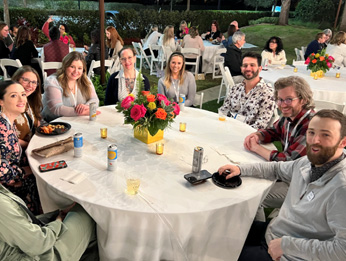Public Relations, or PR, can mean different things to different people across different industries. In the fashion world, it’s synonymous with parties; in the restaurant industry, it’s grand opening events; for corporations it’s getting the word out about an upcoming philanthropic fundraiser. But how does it relate to you and the many hats you wear as an owner of a hearing healthcare practice? And more importantly, will PR really help your business grow?
If you implement a PR strategy correctly, it can certainly help your practice gain exposure to new patients by touting new technology, community outreach and more.
The simple definition of Public Relations sums up what you want your potential customers to take away from any campaign:
PR is the business of inducing the public to have understanding for and a sense of goodwill toward a person, firm, or institution.
Your goal with any PR campaign is to stress your point of differentiation, what new product or service you bring to the table and how that will influence the consumer – your consumer.
Integrating an economical PR component, as it relates to your industry, into a marketing strategy is a great way to gain exposure within your community using little to none of your marketing budget. Think of PR as a time commitment; it can take 5+ touch points with the media before a story is picked up. But don’t be discouraged, because we’ve developed a brief ‘How To’ guide to launching a simple Public Relations campaign.
Step 1: write a press release
Make sure you have something newsworthy to promote. Journalists dislike being bombarded with press releases that have little to no newsworthy value. Concentrate on what’s new in your industry, how the “latest and greatest” products and services affect the customer and important additions to your staff. And limit it to 300-800 words (at under 700 words, you can use the length of this blog post as an example)!
Step 2: communicate with journalists
An important part of a public relations campaign is reaching the journalists and enticing them with your story. Find out who the best contacts are by reading trade and local publications and note which journalists write stories related to your industry. The website of each publication usually lists writers and/or editors to contact (preferably contact via email). Make a contact by introducing yourself and your practice. The more you position yourself as an industry expert in your community, the better you are positioned to be contacted about your area of expertise.
Step 3: follow up
A few days after emailing the journalist(s), reach out with a follow up call. During the follow-up call, ask the following questions:
1) “Did you receive our press release about the latest trend in our industry?”
2)“May I schedule a follow-up interview to answer any questions?”
Step 4: repeat on a quarterly basis
Consistent with any marketing initiative, repetition is the key in PR as well. Be sure to follow up with journalists on at least a quarterly basis to stay top of mind as a local leader in your field.
How do you get started?
If you don’t already have press releases ready to distribute, visit www.AHAAnavigator.com and check out Guidepost #16: Marketing Plan. You’ll find PR FAQs and a repository of hearing related press releases.
Good things come to those who wait…
Follow these steps consistently and you will make a mark in your community as a “thought-leader” in your industry. As with any outreach initiative, if you are involved with community organizations or want to approach businesses in your area, being published is a great addition to your portfolio; it may even lead to speaking opportunities!
In addition, let your current customers know about your industry chops by mailing them a letter, posting a PDF on your website, sending an email and/or displaying a copy of the article in your office. Everyone likes to be connected to a local celebrity.
AHAA Associates who integrate PR into their outreach efforts have received coverage in local newspapers, been asked to speak at industry events and have even received TV exposure.





